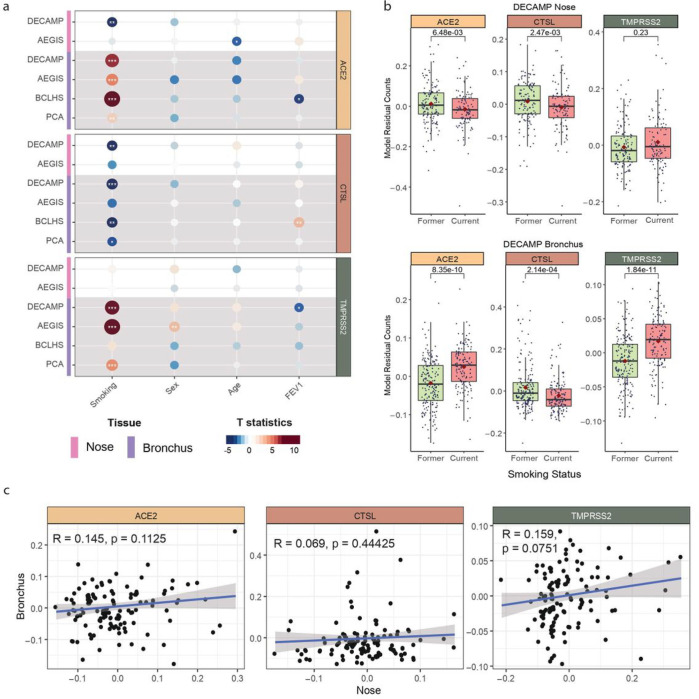Xu, K., Shi, X., Husted, C., Hong, R., Wang, Y., Ning, B., Sullivan, T., Rieger-Christ, K., Duan, F., Marques, H., Gower, A., Xiao, X., Liu, H., Liu, G., Duclos, G., Platt, M., Spira, A., Mazzilli, S., Billatos, E., Lenburg, M., … Beane, J. (accepted by scientific report)
Abstract
Background:
SARS-CoV-2 infection and disease severity are influenced by viral entry (VE) gene expression patterns in airway epithelium. The similarities and differences of VE gene expression (ACE2, TMPRSS2, and CTSL) across nasal and bronchial compartments has not been fully characterized using matched samples from large cohorts.
Results:
Gene expression data from 793 nasal and 1,673 bronchial brushes obtained from individuals participating in lung cancer screening or diagnostic workup revealed that smoking was the only clinical factor significantly and reproducibly associated with VE gene expression. ACE2 and TMPRSS2 expression were higher in smokers in the bronchus but not in the nose. scRNA-seq of nasal brushings indicated that ACE2 co-expressed genes were highly expressed in club and C15orf48+ secretory cells while TMPRSS2 co-expressed genes were highly expressed in keratinizing epithelial cells. In contrast, these ACE2 and TMPRSS2 modules were highly expressed in goblet cells in scRNA-seq from bronchial brushings. Cell-type deconvolution of the RNA-seq confirmed that smoking increased the abundance of several secretory cell populations in the bronchus, but only goblet cells in the nose.
Conclusions:
The association of ACE2 and TMPRSS2 with smoking in the bronchus is due to their high expression in goblet cells which increase in abundance in current smoker airways. In contrast, in the nose these genes are not predominantly expressed in cell populations modulated by smoking. Smoking-induced VE gene expression changes in the nose likely has minimal impact on SARS-CoV-2 infection, but in the bronchus, smoking may lead to higher viral loads and more severe disease.Keywords: Impact of smoking on SARS-Co-V2 infection, nasal and bronchial airways, genes

